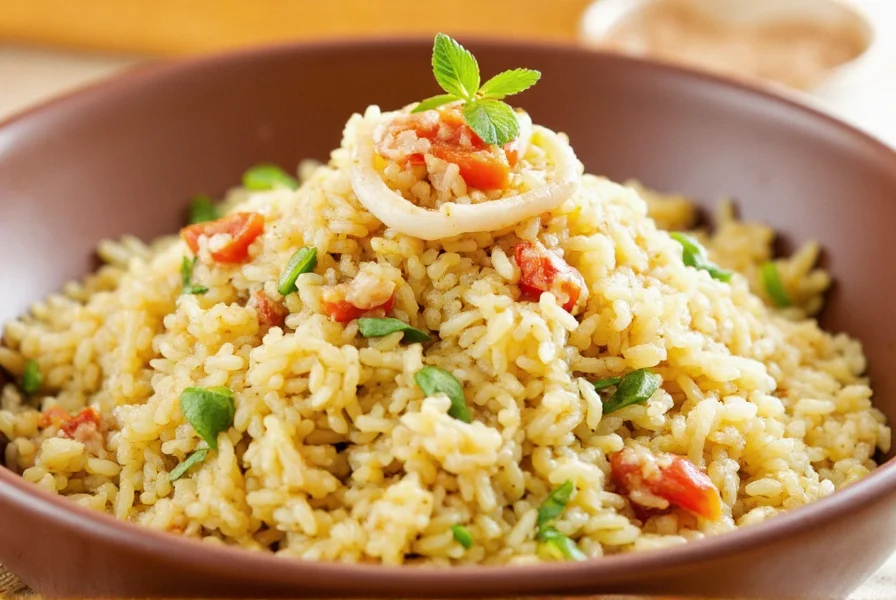Table of Contents
Introduction to Authentic Spanish Paella
Authentic Spanish paella is a celebrated dish from Valencia, Spain, where it originated as a farmer's meal cooked over open fires. Unlike common misconceptions, true paella features short-grain rice, saffron, and regional ingredients like rabbit or seafood, never spaghetti or heavy cream. This guide provides an accurate, step-by-step recipe using traditional techniques to achieve the coveted "socarrat" (crispy bottom layer) and vibrant flavors that define this Mediterranean classic.
Essential Ingredients for Perfect Paella
Authentic paella requires precise ingredients to balance flavor and texture. Here's what you'll need for 4 servings:
- 2 cups Bomba rice (or Calasparra)
- 4 cups chicken or seafood stock (homemade preferred)
- 1/2 cup extra-virgin olive oil
- 1 lb rabbit or chicken (cut into pieces), OR 1 lb mixed seafood (shrimp, mussels, clams)
- 1 red bell pepper (diced)
- 1 small onion (finely chopped)
- 4 garlic cloves (minced)
- 1 cup tomato puree
- 1 tsp smoked paprika
- 1 pinch saffron threads (steeped in 2 tbsp warm stock)
- 1/2 cup frozen peas
- 1 lemon (cut into wedges)
- Salt and black pepper to taste
Step-by-Step Paella Recipe
- Prepare the stock: Heat stock in a saucepan until simmering. Add saffron threads and let steep for 15 minutes.
- Sear protein: In a 14" paella pan, heat olive oil over medium-high. Brown rabbit or chicken pieces until golden. Remove and set aside.
- Soffritto base: In the same pan, sauté onion, bell pepper, and garlic until soft. Add tomato puree and cook until oil separates (about 5 minutes).
- Add rice and spices: Stir in rice, smoked paprika, and salt. Toast for 2 minutes until rice is translucent.
- Simmer: Pour in hot saffron stock to cover rice by 1 inch. Arrange protein on top. Do not stir after this point.
- Develop socarrat: After 15 minutes, add peas and seafood (if using). Cook uncovered until liquid is absorbed and crust forms at the bottom (2-3 minutes on high heat).
- Rest: Cover with foil for 5 minutes before serving with lemon wedges.
Mediterranean Spice Guide for Paella
Spices are the soul of paella. Here's how each contributes:
- Saffron: The signature spice. Steeped in warm liquid to release its golden hue and floral aroma. Never boil directly - high heat destroys delicate compounds.
- Smoked paprika: Adds depth without overpowering. Use "dulce" (sweet) for traditional paella, not "picante" (hot).
- Oregano: Optional but traditional in Valencian versions. Use sparingly (1/4 tsp dried) to complement tomato and garlic.
- Bay leaves: Add during stock simmering for herbal complexity. Remove before serving.
Choosing the Right Rice for Paella
| Rice Type | Description | Best For |
|---|---|---|
| Bomba | Short-grain rice from Spain; absorbs 3x its volume in liquid without becoming mushy | Authentic Valencian paella |
| Calasparra | Protected designation rice from Murcia; similar to Bomba but slightly firmer | Traditional seafood paella |
| Carnaroli | High-starch Italian rice; creamy texture | Risotto-style paella variations |
Key note: Never use Basmati, Jasmine, or Arborio for traditional paella. These varieties lack the starch structure needed for proper texture and socarrat development.
Pro Cooking Tips for Authentic Results
- Pan choice: Use a wide, shallow paella pan (not a deep pot) for even heat distribution and proper socarrat formation.
- Stock temperature: Always use hot stock - cold liquid stops cooking and creates uneven rice.
- Stirring rule: Stir only during initial rice toasting. After adding stock, never stir to preserve the crust.
- Socarrat test: Tap the pan edge with a spoon. A crisp, crackling sound means perfect socarrat.
- Seafood timing: Add shellfish only in the last 5 minutes to prevent overcooking.
Frequently Asked Questions
Why is Bomba rice essential for authentic paella?
Bomba rice has exceptional liquid absorption (3x its volume) while maintaining firm texture. Unlike Arborio (which becomes creamy), Bomba creates distinct grains with crispy bottom layer - the hallmark of true paella. Calasparra is a close alternative, but Basmati or Jasmine will turn mushy due to different starch composition.
Can I use frozen seafood for paella?
Yes, but thaw completely first. Frozen seafood releases excess water that dilutes flavors and prevents proper socarrat. For best results, use fresh shellfish when possible. If using frozen, pat dry thoroughly before adding to the pan.
How do I achieve perfect socarrat without burning?
Listen for the crackling sound and watch for golden-brown crust forming at the edges. When the liquid is almost absorbed, increase heat to high for 1-2 minutes until the bottom layer crisps. Immediately remove from heat and cover with foil to stop cooking. Never scrape the crust - it's the prized part of paella!
Is saffron absolutely necessary?
Yes, for authentic paella. Saffron provides the signature golden color and floral aroma that defines the dish. Substitutes like turmeric alter flavor and are considered inauthentic. Use 0.1g (about 15 threads) for 4 servings steeped in warm stock before adding to rice.
Why should I avoid stirring after adding stock?
Stirring releases starch that prevents the formation of socarrat (crispy bottom layer). Traditional paella cooks in an open pan where rice absorbs liquid from the bottom up. Stirring disrupts this process, resulting in uniform mushiness instead of distinct grains with crispy texture.











 浙公网安备
33010002000092号
浙公网安备
33010002000092号 浙B2-20120091-4
浙B2-20120091-4